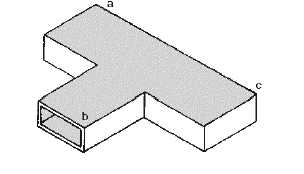7
1-55. For a device to be considered a resonant
cavity, it must fulfill which of the
following requirements?
1. Be enclosed by conducting walls
2. Possess resonant properties
3. Contain oscillating electromagnetic
fields
4. All of the above
1-56. What property gives a resonant cavity a
narrow bandpass and allows very
accurate tuning?
1. Low Q
2. High Q
3. Inductive reactance
4. Capacitive reactance
1-57. What factor(s) determines the primary
frequency of a resonant cavity?
1. Size only
2. Shape only
3. Size and shape
4. Q of the cavity
1-58. Tuning is the process of changing what
property of a resonant cavity?
1. The Q
2. The power output
3. The cutoff frequency
4. The resonant frequency
1-59. An adjustable slug or screw placed in the
area of maximum E lines in a resonant
cavity provides what type of tuning?
1. Volume
2. Inductive
3. Resistive
4. Capacitive
1-60. What are the two basic types of
waveguide T junctions?
1. H-type and T-type
2. H-type and E-type
3. H-type and magic T
4. E-type and magic T
1-61. A waveguide junction in which the arm
area extends from the main waveguide in
the same direction as the electric field is
an example of what type junction?
1. E-type magic T
2. H-type magic T
3. H-type T junction
4. E-type T junction
Figure 1C.—H-type T junction.
IN ANSWERING QUESTION 1-62, REFER
TO FIGURE 1C.
1-62. When an input is fed into the "b" arm in
the figure, which of the following output
signal arrangements is/are available?
1. Out-of-phase signals from arms "a"
and "c"
2. In-phase signals from arms "a" and
"c"
3. An output from the "a" arm only
4. An output from the "c" arm only

